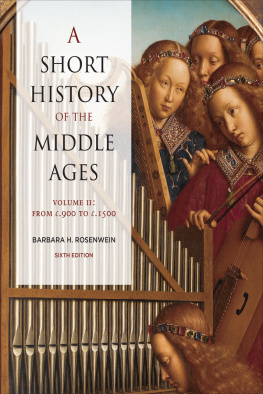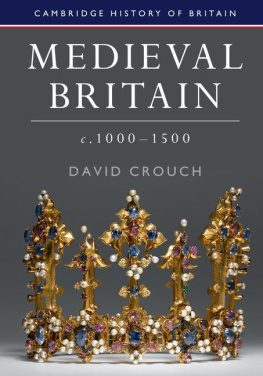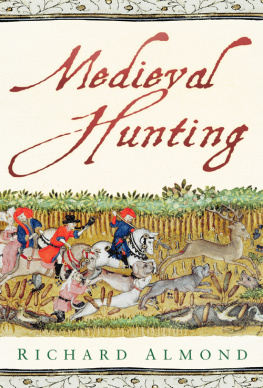Routledge Revivals
Nobles and the Noble Life, 1295-1500
First published in 1976, Nobles and the Noble Life, 1295-1500 offers a rounded picture of aristocratic life in England from the time Edward I began to call his great councillors together in House of Lords through to the end of the Middle Ages. Professor Rosenthals treatment of the aristocracy takes full note of political and economic as well as personal aspects of nobility including the importance of status and the quest for security. He argues that in order to understand the nobility fully the student should consider it in the context of more modern views of elite groups and class structures.
This book will be of interest to students of history primarily but also achieve a wider readership among academics more concerned with historical or political sociology than with medieval studies in their strictest sense.
Nobles and the Noble Life, 1295-1500
by Joel T. Rosenthal
First published in 1976
by George Allen & Unwin Ltd
This edition first published in 2021 by Routledge
2 Park Square, Milton Park, Abingdon, Oxon, OX14 4RN
and by Routledge
605 Third Avenue, New York, NY 10017
Routledge is an imprint of the Taylor & Francis Group, an informa business
George Allen & Unwin Ltd, 1976
All rights reserved. No part of this book may be reprinted or reproduced or utilised in any form or by any electronic, mechanical, or other means, now known or hereafter invented, including photocopying and recording, or in any information storage or retrieval system, without permission in writing from the publishers.
Publishers Note
The publisher has gone to great lengths to ensure the quality of this reprint but points out that some imperfections in the original copies may be apparent.
Disclaimer
The publisher has made every effort to trace copyright holders and welcomes correspondence from those they have been unable to contact.
A Library of Congress record exists under LCCN:76374312
ISBN 13: 978-0-367-68293-4(hbk)
ISBN 13: 978-1-003-13678-1(ebk)
ISBN 13: 978-0-367-68294-1(pbk)
NOBLES AND THE NOBLE LIFE 12951500
Joel T. Rosenthal
Professor of History, State University of New York at Stony Brook
LONDON: GEORGE ALLEN & UNWIN LTD
NEW YORK: BARNES & NOBLE BOOKS
(a division of Harper & Row Publishers, Inc.)
First published in 1976
This book is copyright under the Berne Convention. All rights are reserved. Apart from any fair dealing for the purpose of private study, research, criticism or review, as permitted under the Copyright Act, 1956, no part of this publication may be reproduced, stored in a retrieval system, or transmitted, in any form or by any means, electronic, electrical, chemical, mechanical, optical, photocopying, recording or otherwise, without the prior permission of the copyright owner. Enquiries should be addressed to the publishers.
George Allen & Unwin Ltd, 1976
ISBN 0 04 942139 5
This book is meant to offer an introduction to the manifold activities of the secular peerage in the fourteenth and fifteenth centuries. It only treats the parliamentary peerage, the men summoned by individual writs of summons to sessions of the kings parliament (plus members of their families). The great gentry, the professional captains, and the spiritual lords the bishops and the mitred abbots are not included. But there are peers aplenty, and if many of them have been deemed worthy of individual treatment, where the data permit, it seems selfevident that as a group they also merit our attention.
I am not concerned here to explain any particular event or single phenomenon. The Introduction, as well as the documents I have selected, is designed to survey many facets of aristocratic life and behaviour. If the political is the most striking and familiar, it must share the stage with economic, familial and personal concerns. Though I am an historian, and I write for an audience of historians, it may be that my frame of reference as well as some of my terminology will strike some readers as tainted by sociology. I apologise for unintentional insults. I do believe that we can best understand the medieval nobility if we view it as an articulate elite, the topmost segment of the upper class. The nobles expressed a considerable degree of class-consciousness and a concern with class privilege: they worried about class and status, and we should also.
This book is written under strict censures regarding length. This means that some substantive material has been jettisoned: the role of the peers in the council and their activity as builders are but two casualties, and there are many others. My debt to many scholars, living and dead, at best is summarily indicated; in too many instances it is not explicitly mentioned. Suffice it to say that I could not have written this small piece but for the labours of others. Most of the documents which make it possible to illustrate aristocratic life have already been printed, so for the most part all I had to do was to translate or modernise. A few manuscripts have been included, to give a sample of the large storehouse which is still undisturbed. I have included extracts from the various calendars of documents published by the Public Record Office. While calendared excerpts are not primary documents, they were done carefully to catch the substance of the extended original, and their brevity constitutes a compelling virtue. I have transcribed several such pieces in full (Documents 3, 26(b), 30(b) (c) (d), 36(b), 47, 68) to show the full wording. In the interests of comprehensibility I have also taken some liberties with the spelling, and occasionally with the actual wording, of English documents.
I wish to thank the general editor of this series for his encouragement. The library (and librarians) at the Institute of Historical Research and at the University of Sussex were generous with time and advice. I also wish to thank the archivists and staff at the repositories where I worked on documents. Mr Francis Steer at Arundel Castle was very helpful, in conditions more befitting a medieval castle, probably under siege, than a modern library. V. Lebovics and D. S. Petrey helped with translations. Lastly, many academic authors speak fulsomely of the help received from wife and children. I may love my family as much as the next, but they have little to do with my books.
CONTENTS
ACKNOWLEDGEMENTS
I wish to acknowledge the kindness of many parties for permission to reprint these documents : Oxford University Press for documents 16a, 71, 75 and 76; David McKay Co. Inc. for document 17; Cambridge University Press for document 18; Eyre & Spottiswoode Ltd for documents 27 and 73 ; the Controller of HM Stationery Office for the use of printed documents 30a, 31b, 31c, 54a and 54b, and for permission to use manuscripts within the Crown Copyright kept in the Public Record Office, documents 30b, 30c, 30d, 36b, 40, 58a, 58b, 59 and 68; Sydney University Press for document 37 ; the Dean and Chapter of Westminster for their courteous permission to use document 38; the Sussex Record Society for document 39; the Royal Historical Society for documents 41, 42, 43 and 48; the County Record Office of the East Sussex County Council for document 44; the British Library Board for documents 45 and 46; the Director of the Institute of Historical Research for document 47 (which I have translated); and Archon Books, Shoestring Press, Inc. for documents 49 and 50.








